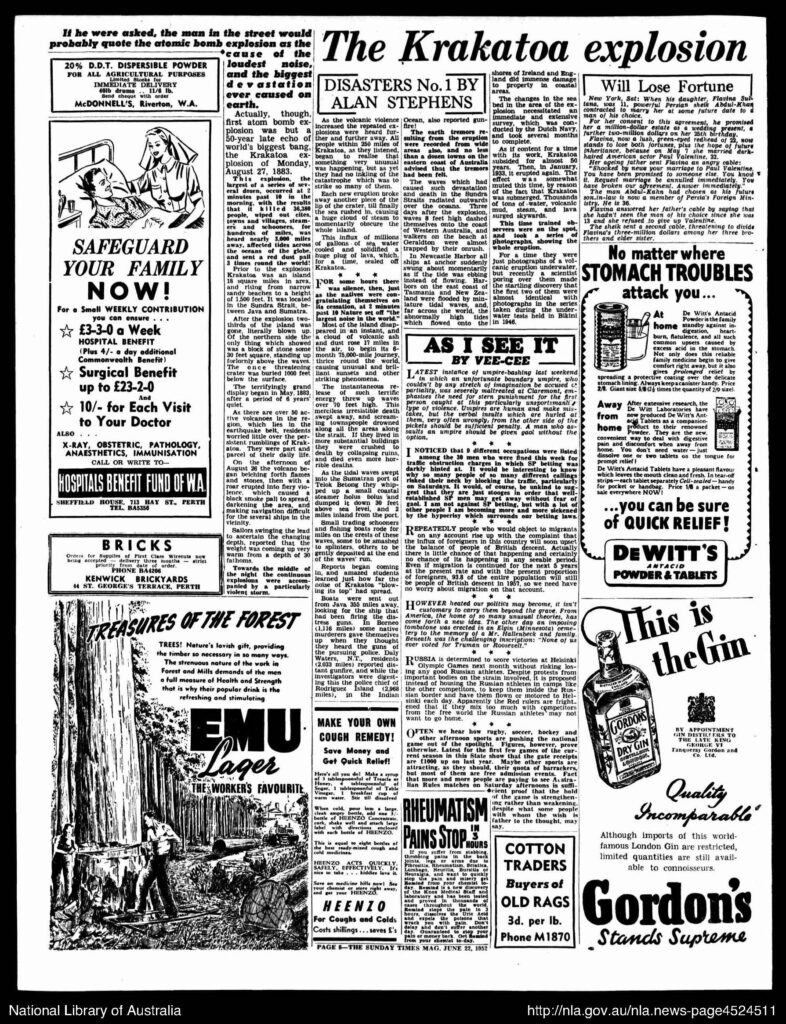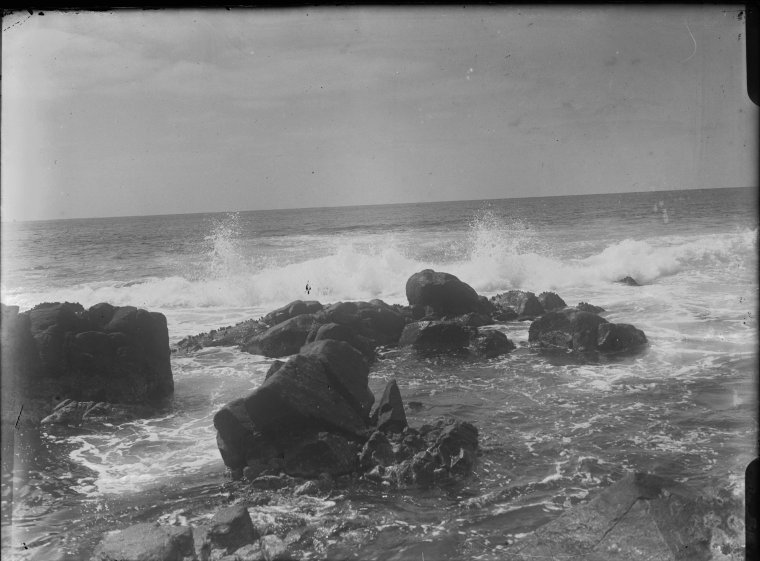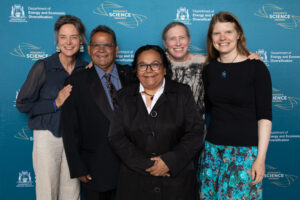In the quiet Vasse district of WA, the evening of 27 August 1883 must have felt like something out of a mystery novel.
Sergeant McDonald of the Vasse Police Station received a report from Constable Tonkin. Tonkin claimed to have heard the deep boom of “a large gun” coming from the northwest multiple times throughout the afternoon. Yet there was no ship in sight and no explanation.
The methodical and thorough sergeant launched an investigation. But the source of the sound was as elusive as it was unsettling. What the police were unaware of was they weren’t dealing with a local oddity but a global event.

Credit: Supplied WA State Archive
THE INVESTIGATION
The police report documents the baffling events. Along with Tonkin, several other residents reported hearing the sounds, which seemed to echo from the direction of the ocean.
Seeking answers, Sergeant McDonald dispatched PC Sutton to Cape Naturaliste the following day. Armed with a spyglass, Sutton scanned the waters for signs of shipping or distress.
Sutton returned 2 days later with no news. He hadn’t seen any ships, wreckage or activity around the Naturaliste Reef, which he confirmed was clearly visible through the spyglass.
Sutton did note one unusual phenomenon though. The tides at Cape Naturaliste had experienced a dramatic rise and fall over the past few days. He speculated these tidal movements could explain the mysterious sounds, but the sergeant’s report noted there had been no such changes observed at Vasse.
Without further clues, the investigation reached a dead end. The “gunfire” that startled the people of Vasse remained an enigma – until modern science shed light on the mystery.
THE EARTH ROARED
Halfway across the world in Indonesia on the same date, the Krakatoa volcano erupted with such immense force, it shattered the island and sent shockwaves racing around the globe.
The eruption generated colossal tsunamis, devastated surrounding regions and released such immense energy that the sound of the explosion was heard more than 5000 kilometres away. It’s widely regarded as the loudest sound ever recorded.
The “gunfire” heard in Vasse was the infrasound generated by Krakatoa’s eruption, travelling vast distances through the atmosphere. The unusual tides Sutton observed were also part of Krakatoa’s far-reaching impact, likely caused by tsunami waves or atmospheric pressure disturbances from the explosion.
The eruption’s shockwaves also disrupted weather patterns and ocean currents. The people of Vasse were unknowingly experiencing the aftershocks of an event that reshaped the planet.
Credit: Leiden University Libraries, Public Domain
A WINDOW TO THE PAST
Sergeant McDonald’s report is more than just a historical curiosity. It’s a snapshot of a moment in time when the natural world revealed its immense power in ways that early science struggled to explain.
The 1880s were an era where the limits of human understanding were constantly tested. This report reveals how local authorities documented phenomena with care and detail, despite lacking the tools or knowledge to make sense of them.
The connection between Krakatoa and the Vasse “gunfire” wasn’t made until decades later as scientists pieced together accounts from around the world to map the scale of the eruption’s impact.
This small corner of WA played its part in what is now recognised as one of the most significant natural disasters in human history.
REFLECTIONS
The story of the 1883 Vasse “gunfire” reminds us that WA, despite its geographic isolation, remains connected to the wider world. Krakatoa’s eruption was a stark demonstration of how nature operates on a global scale, linking distant places through shared experiences.
The Vasse police report is a testament to the curiosity and diligence of the officers involved. It’s a reminder that, even in an age of limited scientific understanding, people sought to document and investigate the unknown.
The next time you’re at Cape Naturaliste, imagine the scene in 1883. The unsettling sounds of distant explosions, the tide surging and receding and a sergeant and his constable puzzling over a mystery. Little did they know their meticulous report would one day be a piece of the puzzle in understanding the might of Krakatoa.










